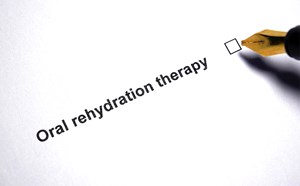
How can Emergency Physicians Optimize Transition of Care for Youth with Congenital Heart Disease?
Muhammad Waseem, MD
Congenital heart disease (CHD), which is the most common birth defect, affects nearly 1% of births each year in the United States.1 With improved medical treatment such as early recognition, timely operative repair or palliation, and critical care, most children with CHD are now expected to survive into adulthood. However, to support better quality of life through childhood and beyond, people with heart defects need lifelong cardiac care, but for various reasons they are not receiving it. Notably, individuals with CHD are vulnerable to being lost to cardiac follow-up care, with evidence showing that after the age of 6 years old 28% of patients do not see a cardiac specialist, 47% after age 13-years-old, and 61% after 18 years of age.2 This could result in increased morbidity and impaired quality of life as well as more emergency department (ED) visits for this population.
In 2020, there were over 130 million visits to the ED, of which 41% were for individuals 25 years and under.3 As emergency physicians, we provide a unique touchpoint with these patients, whether they are in the ED because of their heart problem or for another reason. In addition to caring for them in the moment during ED visits, emergency physicians can also play a critical role in supporting patients and families in optimizing their transition of care and ensuring they receive care across the lifespan. Particularly for adolescent patients with CHD, this is a time when they are vulnerable to getting lost in the transition and transfer of health care. They may be anxious when initiating care with a new, unknown health care team, and emergency physicians can provide an increased emphasis on the process of transitional care ensuring continuity of care in children with special health care needs, including CHD.
As emergency physicians, we can support optimal health care transition for patients with CHD by recognizing congenital heart disease when evaluating patients of all ages, facilitate appropriate cardiac follow-up and continuity of care to minimize interruption of care, and working to bring youth with CHD back to cardiology service if they are experiencing a lapse in care.
What is Health Care Transition?
Health care transition is the process by which young adults prepare to take charge of their lives and their health in adulthood,4 and is a more comprehensive process that goes beyond transfer.5 It is a shared responsibility between the patient, family, and pediatric and adult care teams, and should be considered as a process rather than a onetime hand-off.6 Effective transition of care for youth with special health care needs can be complex as a result of their extensive medical, social, and developmental needs.7 The goal of health care transition is “to maximize lifelong functioning and potential through the provision of high quality, developmentally appropriate health care services that continue uninterrupted as the individual moves from adolescence to adulthood.”8 Although the ED is not a routine care touchpoint, emergency physicians can support individuals with CHD through having an informed discussion about surgery during childhood being corrective, not curative, and that continued congenital cardiac care is required to support quality of life and manage long term effects. This is true of many other chronic diseases where lapses in care in the adolescent or early adult ages are most likely and risk potential complications.
Supporting Health Care Transition in the Pediatric Emergency Room
Early Planning
This preparation for transition should begin in early adolescence.9 If this process occurs late, this may not give patients and families adequate time to consider all the needs of the transition process.10,11 An overall plan should be to develop an effective transfer to adult care. During this planning, patient and family psychological readiness should be assessed. The primary focus involves fostering self-knowledge about their specific condition, self-care skills, and self-advocacy skills. Youth may have varying degrees of maturity and may lack the autonomy or desire to assume responsibility for their own health conditions. Pediatric emergency medicine physicians can support patients and families by explaining why — even after heart surgery — patients with a CHD need to see a congenital cardiologist regularly, throughout the lifespan. Help your patients identify and connect with the right team members within their care system to begin transition of care planning early.
Identify Unmet Needs
Every effort should be made to make it simple and synchronize with other transitions in their lives.12,13 As much as possible, transition of care should occur at the time of stability and not during acute illness presenting with significant symptoms.14 Pediatric emergency medicine physicians should encourage patients to follow-up with their pediatrician or primary care physician after the ED visit, for the purpose of ensuring that they have access to a congenital cardiologists and have begun the health care transition process.
Some patients with heart defects may not understand why they need to see a specialist, so it’s important to explain what a congenital cardiologist does. Emphasize that congenital cardiologists know more about heart defects than anyone else — including which medicines or procedures patients may need.
Successful transition of care results in improved outcomes and patient safety. This can be facilitated by standardized tools and processes that support a structured format. Clear transfer of responsibility is important. Communication is the key to safe transition. This should be a written care plan that includes a comprehensive summary of a patient's medical history and medical record. Effective communication among teams is helpful to improve continuity of care. This should be coordinated and individually tailored. ED physicians can support this process by:
- Identifying CHD among youths presenting to the ED for any reason.
- Inquiring about their follow up with the congenital cardiology service. Connect them with a congenital cardiologist if they do not have one.
- Informing them about the resources and regional CHD services.
Although most heart defects are repaired in early childhood, the continued care across the lifespan requires understanding of the disease's progression.15 The outcome is optimal if care is provided by a congenital cardiologist, and it is therefore important to identify and connect patients with a regional CHD specialist, or center when possible. If this transition is not carefully planned, many youths may be lost to follow-up resulting in discontinuity of care and adverse health outcomes.
Conclusion
Successful and structured transition of care from a pediatric to an adult healthcare professional can improve outcomes in individuals with congenital heart disease. This requires support from all physician groups to transition from pediatric care to adult-focused care. As an emergency physician, you can help change this. When people with heart defects visit the emergency room for any reason, you have an opportunity to connect them to congenital cardiac care and support them with successful transition of care.
Take these steps to help make sure people with heart defects get the care they need:
- Ask patients — or their caregivers — if they have a history of heart problems. They may not mention it unless you ask.
- Ask adults with heart defects if they’re seeing a congenital cardiologist — a specialist who treats people who were born with heart defects. And for children with heart defects, ask their caregivers if they’re seeing a pediatric cardiologist. If they’re not, explain why lifelong congenital cardiac care and beginning the health care transition process early, are both important.
- Refer patients who aren’t getting the care they need to a congenital cardiologist. If you need help finding adult congenital cardiologists in your area, check out the ACHD Clinic Directory. Refer children who aren’t getting the care they need to a local pediatric cardiologist.
To learn more, check out:
- The AAP Congenital Heart Defects Toolkit
- Congenital Heart Defects Resources from CDC
- The Congenital Heart Public Health Consortium
When you connect patients with heart defects to congenital cardiac care, your impact can last long beyond their visit to the emergency room.
References
- Reller MD, Strickland MJ, Riehle-Colarusso T, Mahle WT, Correa A. Prevalence of congenital heart defects in Atlanta, 1998-2005. J Pediatr. 2008;153:807-13.
- Mackie AS, Ionescu-Ittu R, Therrien J, Pilote L, Abrahamowicz M and Marelli AJ. Children and adults with congenital heart disease lost to follow-up: who and when? Circulation. 2009;120:302-9.
- National Center for Health Statistics, National Hospital Ambulatory Medical Care Survey, 2020.
- Knauth A., Verstappen A., Reiss J., Webb G.D.: Transition and transfer from pediatric to adult care of the young adult with complex congenital heart disease. Cardiol Clin 2006; 24:619-629
- Dimopoulos K, Opotowsky AR, Constantine A, D'Alto M. Often transferred, rarely transitioned: The current state of transition for young people with congenital heart disease. Int J Cardiol. 2021 Apr 15;329:89-90
- Blum R.W., Garell D., Hodgman C.H., et al.: Transition from child-centered to adult health-care systems for adolescents with chronic conditions. A position paper of the Society for Adolescent Medicine. J Adolesc Health 1993; 14:570-576
- 7. Coyne I., Sheehan A., Heery E., While A.E.: Healthcare transition for adolescents and young adults with long-term conditions: qualitative study of patients, parents and healthcare professionals’ experiences. J Clin Nurs 2019; 28:4062-4076
- American Academy of Pediatrics, American Academy of Family P, American College of Physicians-American Society of Internal M: A consensus statement on health care transitions for young adults with special health care needs. Pediatrics 2002; 110:1304-1306
- Zhou H., Roberts P., Dhaliwal S., Della P.: Transitioning adolescent and young adults with chronic disease and/or disabilities from paediatric to adult care services—an integrative review. J Clin Nurs 2016; 25: 3113-3130
- Gray W.N., Resmini A.R., Baker K.D., et al.: Concerns, barriers, and recommendations to improve transition from pediatric to adult IBD care: perspectives of patients, parents, and health professionals. Inflamm Bowel Dis 2015; 21:1641-1651
- DiFazio R.L., Harris M., Vessey J.A., et al. Opportunities lost and found: experiences of patients with cerebral palsy and their parents transitioning from pediatric to adult healthcare. J Pediatr Rehabil Med 2014; 7: 17-31
- Fernandes S.M., O'Sullivan-Oliveira J., Landzberg M.J., Khairy P., Melvin P., Sawicki G.S., et al.: Transition and transfer of adolescents and young adults with pediatric onset chronic disease: the patient and parent perspective. J Pediatr Rehabil Med 2014; 7:43-51
- van Staa A., Jedeloo S., van Meeteren J., Latour J.M.: Crossing the transition chasm: experiences and recommendations for improving transitional care of young adults, parents and providers. Child Care Health Dev 2011; 37: 821-832
- Hart LC, Maslow G. The Medical Transition from Pediatric to Adult-Oriented Care: Considerations for Child and Adolescent Psychiatrists. Child Adolesc Psychiatr Clin N Am. 2018 Jan;27(1):125-132
- Warnes C. Adult congenital heart disease: The challenges of a lifetime. European Heart Journal 2016; 38:2041-2047




